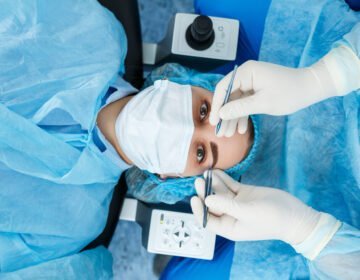
Calf Implants: Everything should know
What is a calf implant?
The Calf Implant is a silicone-based product designed to improve the calf area. Also called calf augmentation, this is one of the surgical procedures performed only by a plastic surgeon.
If you are worried about the lower legs appearance, you may be interested in calf implants. This type of surgery can also be used by bodybuilders and people with injuries or disabilities. It is known that both men and women have calf implants. Overall, calf implants are very effective and have a low incidence of side effects. However, all cosmetic surgery can be risky (and expensive), so it’s essential to understand all the details of calf implants before making an appointment.
How much does a calf implant cost?
The American Society of Plastic Surgeons reported that the average cost of a calf implant surgeon in 2017 was $ 3,707. It’s important to note that this is a national average-your cost that may be slightly lower or higher depending on where you live.
You also need to consider the hidden costs of the procedure that the surgeon’s fee is not covered. This includes anaesthesia, hospital room and dosing. You can also schedule the time to take a break from work when you don’t have enough paid vacation.
Calf augmentation is an aesthetic procedure and is not covered by insurance. We recommend that you collect all expenses in advance and make a payment plan if necessary.
How Do Calf Implants Work?
Calf implants contain silicone, a durable rubber-like material. When placed under the skin, it gives the area a perfect look. This helps to increase the fullness of the calf when there is a lack of muscle. In return, your calf will grow as well.
Calf Implant Procedure
Calf Augmentation is an outpatient procedure. This means that you can have surgery in the surgeon’s office or hospital, but you can also come home the same day.
According to the International Society of Cosmetic Surgery (ISAPS), calf implants take about an hour and a half. This does not apply to preoperative preparation time or recovery from anaesthesia. Overall, you should expect to spend a whole day on your procedure.
Anaesthesia is performed by anaesthesia before the actual procedure. This allows you to fall asleep during surgery and not feel any pain. Anaesthesia is given intravenously, either locally using a mask or intravenously through a needle.
During surgery, a cosmetic surgeon makes an incision in the calf and inserts a silicone implant. Then sew the skin together.
Calf Implant Target Area
Calf Implants are used only to highlight the back of the lower body. If you have other cosmetological concerns about your foot, for example, if you want to outline your thighs, you should discuss the individual steps with your surgeon.
Are there any risks or side effects?
All cosmetic surgery can have both mild and severe risks and side effects. Minor side effects of calf implants include bruising and swelling from the incision. Redness and discomfort can also occur in the first few days.
Some people experience the side effects of anaesthesia. These can be felt immediately within the first few hours after surgery and may include nausea and vomiting. More severe side effects can consist of infections and excessive bleeding. Contact your doctor if you notice increased pus, swelling or bleeding in the calf area.
Silicone implants also carry the risk of rupture or misplacement. You may find something wrong when your calves shrink or when you feel fullness in another area of your foot. If you suspect an implant problem, contact your surgeon immediately. What to expect after a
What to expect after getting calf implants?
You need at least a few days off to fully recover from calf transplant surgery. Your doctor will give you a compression bandage that ISAPS says you must wear two weeks after surgery. You should avoid exercising and keep your feet as accessible as possible for the last two weeks. Bruises and inflammation subside after surgery and disappear within a few weeks.
ISAPS recommends refraining from drinking alcohol for three weeks after surgery. This is also necessary to ensure that your body gets the water and nutrients it needs to regenerate. With proper diet and fluid intake, regular activity can be resumed after a few weeks without complications. The results of calf augmentation are long-term but not permanent. If the silicone implant deteriorates due to natural wear, it may need to be repeated after a few years.
Overall, the Journal of the American Society of Plastic Surgeons estimates the incidence of calf transplant complications to be less than 1%.
Preparing for calf implants
However, during outpatient treatment, it is advisable to make specific preparations for a calf transplant. If necessary, make sure you arrive early to complete the paperwork and plan your payment. It’s essential to have someone take you home.
You also have to arrange a vacation from work. Ideally, I would like to have a complete two-week break, but at least a few days.
Calf Implants and Fat Transplants
Another option for large calves is a procedure called fat transplants. Instead of placing an implant in the calf, a fat transplant transfers soft tissue from another part of the body, including the thigh, to that area.
In some cases, calf implants are combined with fat transplants to outline the body more accurately.
Fat transplants are less invasive and require less anaesthesia. However, for best results, the surgeon may recommend both procedures together.
















